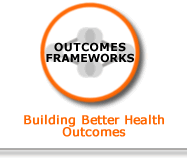Impact on outcomes
Possible gaps in evidence
Sources
Impact on short term and intermediate outcomes
There is review level evidence supporting:
- (publicly sponsored) telephone quitlines (including recommendations for telephone helplines and for communication strategies co-ordinated to support them and smoking cessation service delivery) [1,2,3]
- proactive telephone support (has a modest effect on smoking cessation) [1,3,4]
- reactive telephone support (improves abstinence rates over self-help materials alone) [1,3]
Gaps in evidence include the limited evidence on:
- the effectiveness of telephone support for minority ethnic groups (and inconclusive evidence) [1,3]
- the comparative effectiveness of proactive and reactive quitlines [1,3]
- quitlines’ cost-effectiveness[1,3]
Source:
1. NICE (2008). Public Health Guidance 10 – Smoking cessation services in primary care, pharmacies, local authorities and workplaces, particularly for manual working groups, pregnant women and hard-to-reach communities. NICE, London
2. Gutierrez, K., (2007). Mass Media Intervention to Stimulate and Promote Smoking Cessation: Expert Opinion Paper. For National Institute for Health & Clinical Excellence (NICE): Public Health Programme Guidance 10. NICE, London;
3. Bell K, Richardson L, Greaves L, on behalf of the British Columbia Centre of Excellence for Women’s Health, Vancouver (2007). Rapid Review: The Impact of Quitlines on Smoking Cessation. For NICE Public Health Programme Guidance 10. NICE, London
4. Stead LF, Lancaster T and Perera R. Telephone counselling for smoking cessation. Cochrane Database of Systematic Reviews 200.
|



